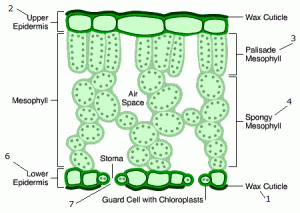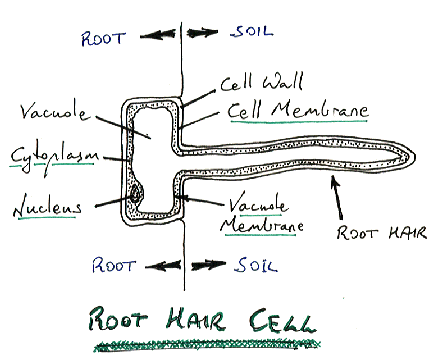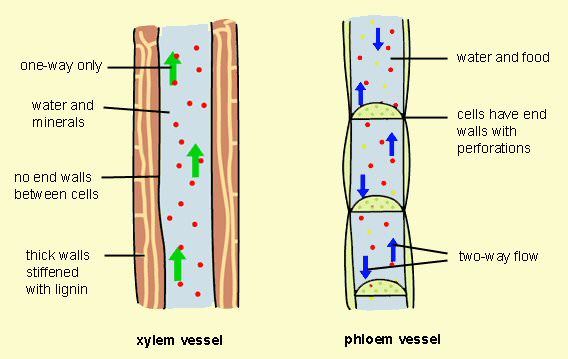Plant Tissue
Structure of the Plant
| Part of the Leaf | How is it adapted for photosynthesis and gas exchange? |
| Broad leaves | Increase surface area by being broad. Underneath, it is porous with lots of air spaces between the outer layers of cells. |
| Stomata in the lower epidermis | Helps with gas exchange - the stomata can open and close so that it controls which gases and water can exit or enter. |
| Thin leaf shape | Short distance for the gas exchange to take place |
| Xylem and Phloem | Network that allow substances to be transported to the right places of the plant so that growth can take place |
| Cuticle | Waxy layer to prevent too much water to be lost during evaporation. |
| Transparent epidermis | Allow light to get through to the chlorophyll so that light can be absorbed for photosynthesis |
| Spongy Mesophyll | Irregular cell shapes with large spaces so that gas exchange can take place between stomata and photosynthesizing cells |
| Palisade Mesophyll | Where lots of chloroplasts can be found, so that photosynthesis can take place. Irregular shapes to allow gases to pass through. This is located near the top so that it can absorb more light for photosynthesis to take place. |
| Meristems | Stem cells can also be found in specific regions of plants are found in the tip of the roots and shoots. Meristems exist in plants as it ensures that plants have the capacity to grow taller and wider throughout its life. |
Root Hair Cells
Plants are able to absorb water through osmosis, and absorb mineral ions through active transport. Root hair cells are adapted so that they can carry out these functions. Root hair cells are long and thin, which gives them a large surface area in order to increase the rate of absorption. They contain mitochondria which is needed for active transport as it moves the minerals against the concentration gradient. Mitochondria releases energy from the glucose during respiration so that it can provide the energy that is required for active transport.
Xylem
The xylem is a plant tissue that is vital for the plant as it transports water and minerals from the roots to the plant’s stem and leaves. Part of the Xylem is made of dead cells. They do not have a end wall as the xylem is a continuous hollow tube. Lignin can be found in their walls as it strengthens the plant. The transportation of water and minerals does not require any energy.
Phloem
The phloem is also an important plant tissue as it moves food substances (sucrose) that were produced through photosynthesis towards growing parts of the plant, storage organs (bulbs and tubers) and developing seeds. The substances that transport throughout the phloem will travel both up and down the stem as there are so many different parts of the plant that require the food.
- What does the phloem transport?
- Your answer should include: Food / Substances
- Through which process do root hair cells absorb water from the soil?
- Osmosis


